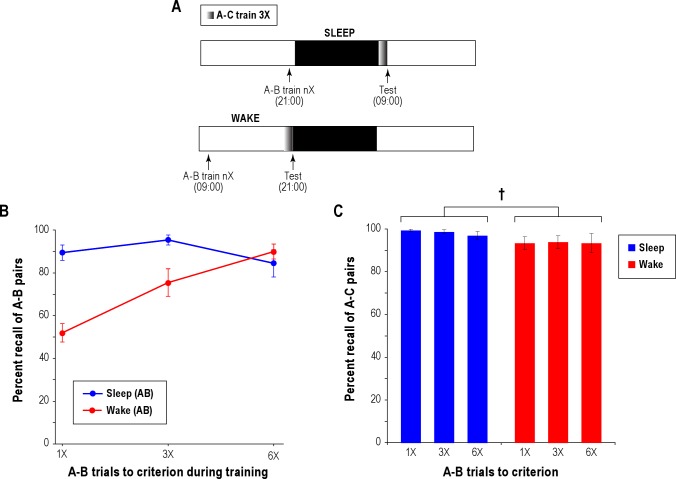Figure 2.
Experiment 2: Sleep protects weakly encoded memories from interference. (A) The experimental design is similar to that in Experiment 1, with the exception that there were 6 groups of participants, 3 each in the sleep and wake conditions. Subgroups had to correctly recall each associate (A-B) in the second phase of training either n = 1, 3, or 6 times (1X/3X/6X). (B) Percent recall of A-B word associates at test 12 h following the initial training as a function of the number of learning trials to criterion following an intervening period of sleep or wake. The number of trial to criterion at the time of learning is related to the degree of memory encoding. Statistical analysis revealed a highly significant group (Sleep/Wake) × trials to criterion (1X/3X/6X) interaction (see text for details). The bars indicate one standard error of the mean (SEM). (C) Percent recall of newly learned A-C word associates at test in sleep versus wake. The trials to criterion for the A-C stimulus pairs was 3X for all groups. †Indicates marginal significance (0.05 < P < 0.1).

